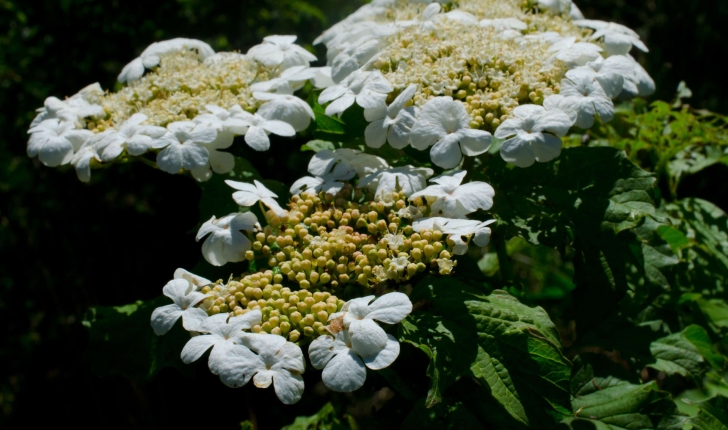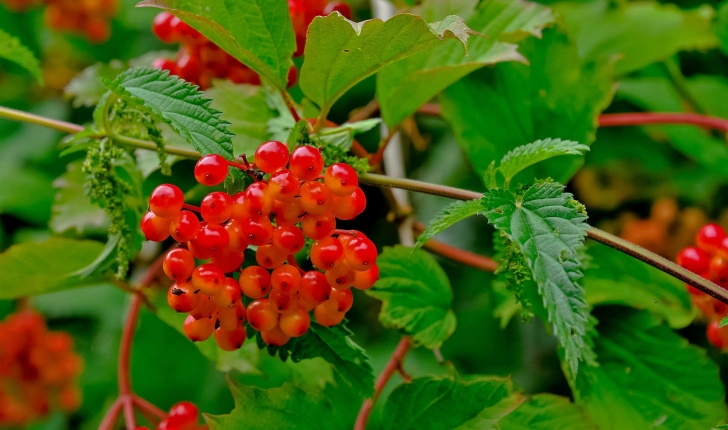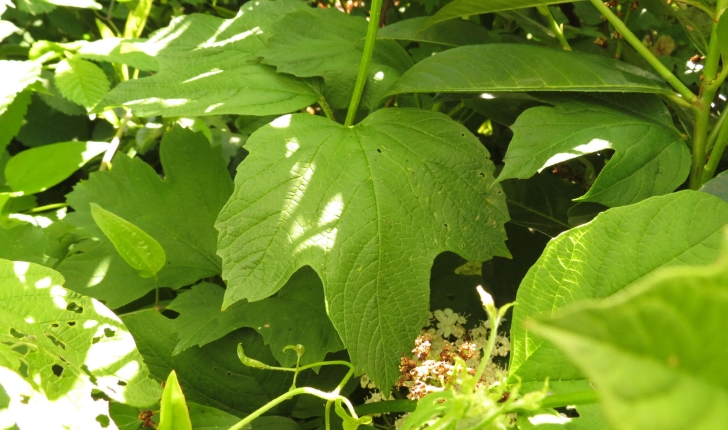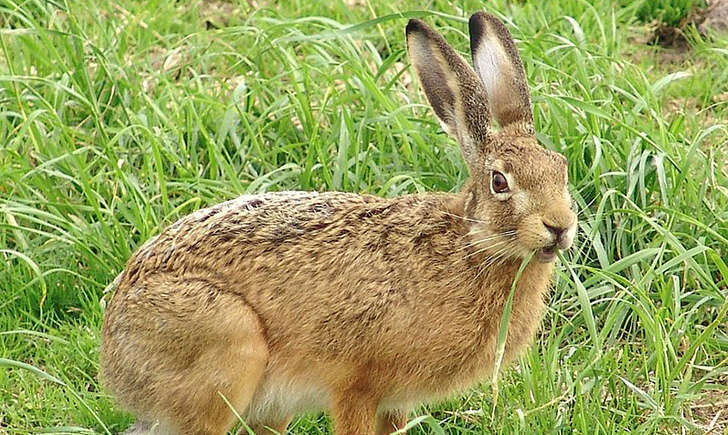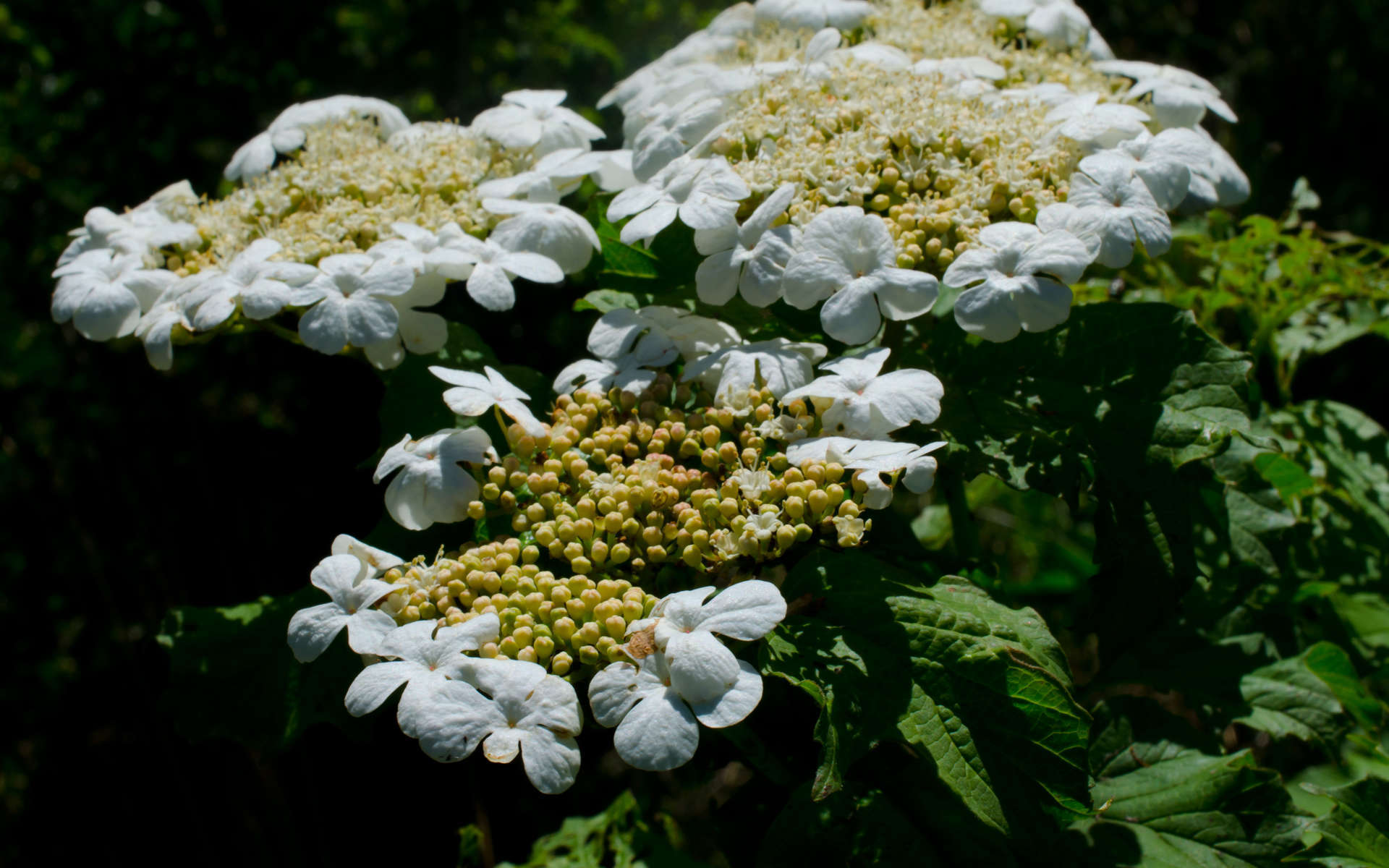
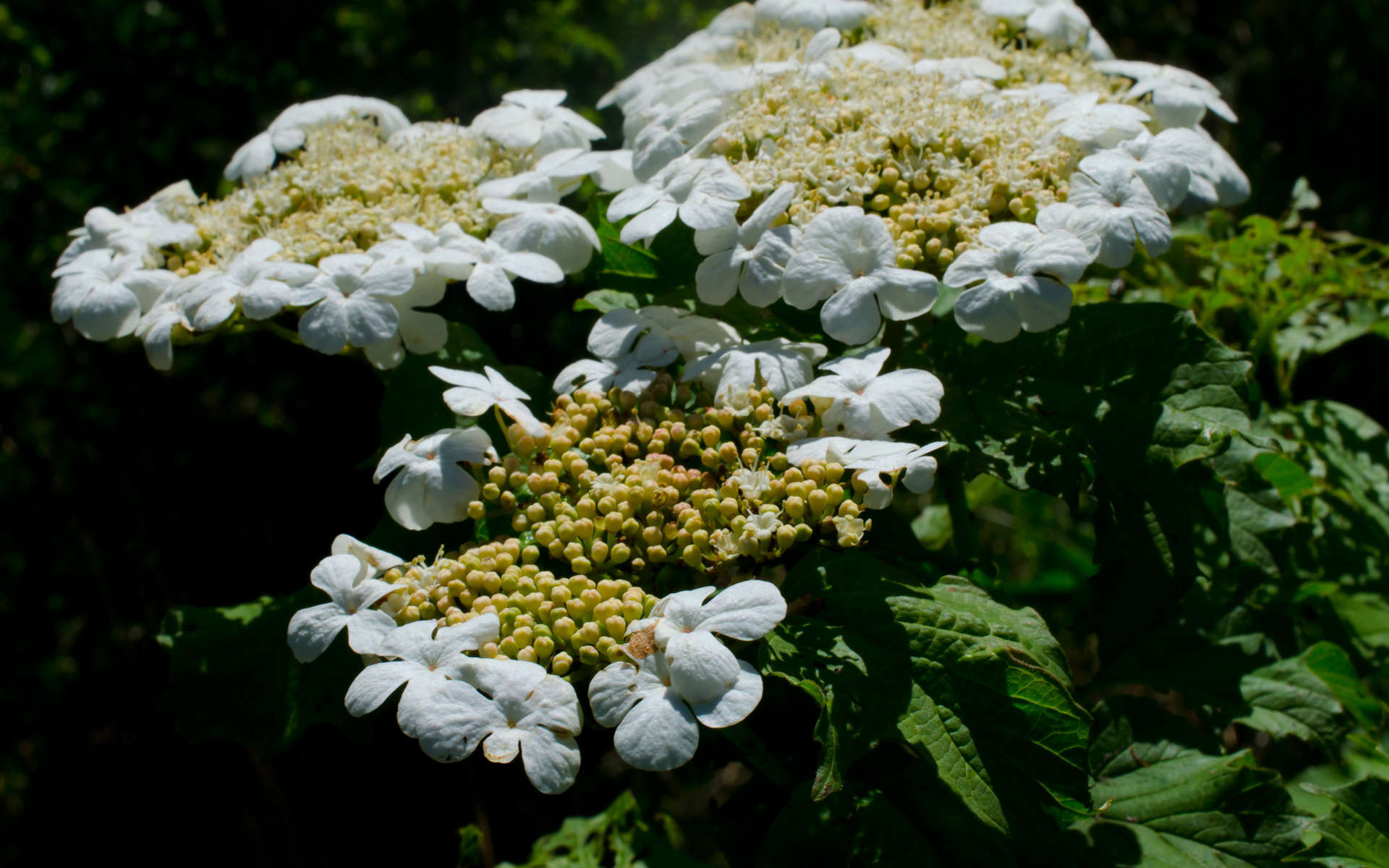
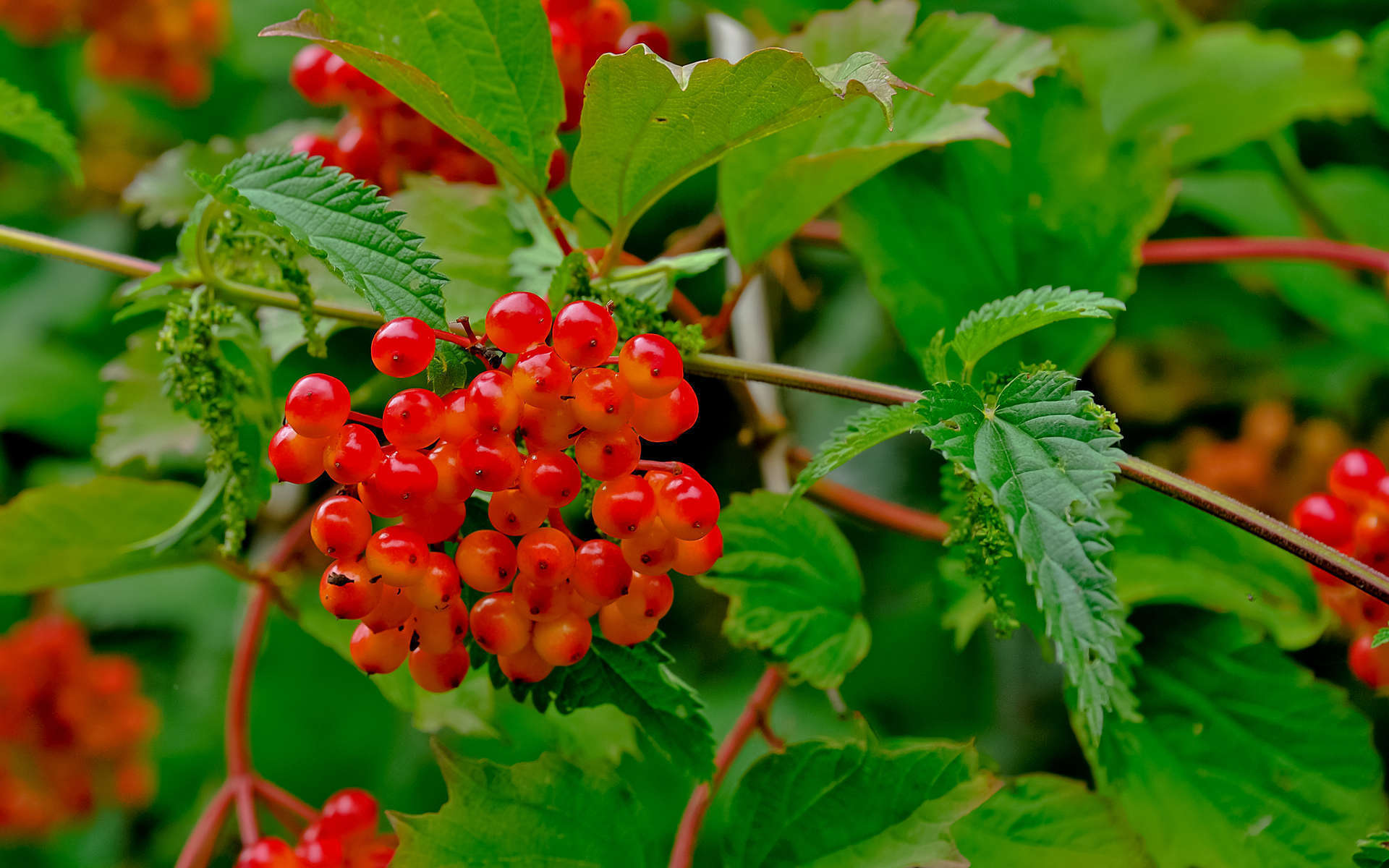
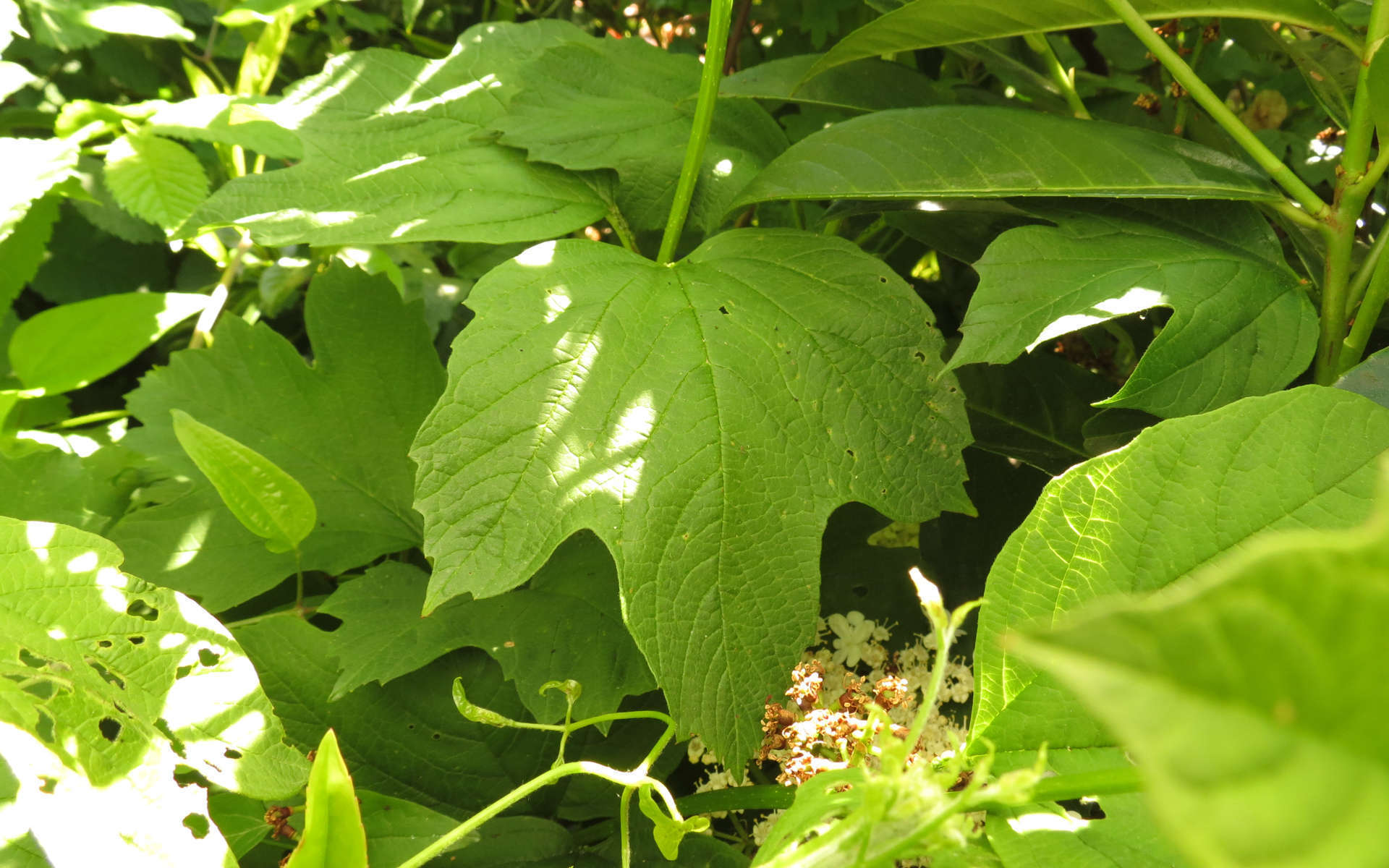
<p>La viorne obier est un arbuste pouvant atteindre 4 m de haut. Celui-ci fait partie de la même famille que les sureaux et possède également des petites baies rouges. Ses fleurs blanches ont 5 pétales et se regroupent pour former une sorte de boule qui s'épanouit de juin à juillet. Nous l'observons principalement sur sol neutre, frais à humide, dans des haies, fourrés, marais boisés, lisières... </p>






